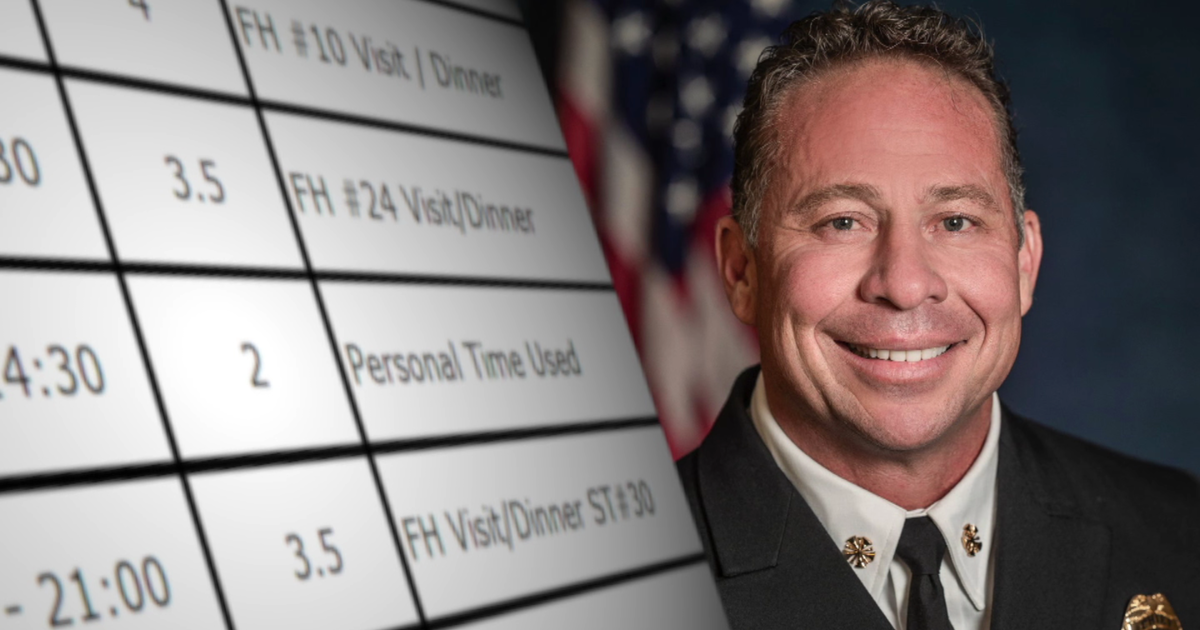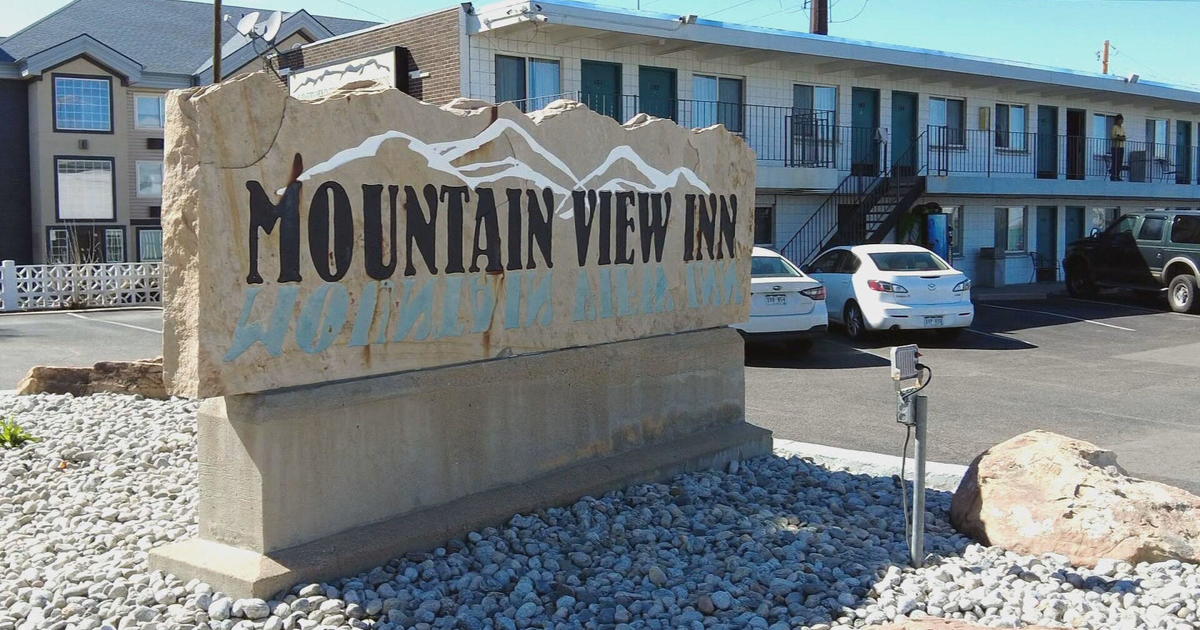Traditional Cyclists, E-Bikers Clash Over New Trail Rules
DENVER (AP) — After a couple days of hard hiking last fall, Tim Brass thought it was time to track down a motor. He was bowhunting in a trophy unit near Creede, and plenty of other hunters were using a motorized trail for swift access.
His friend offered an e-bike. Brass got his elk.
"Best hunting experience of my life. And that tool made it a lot easier to get the elk out of there, I'll tell you that. It made it bearable, for sure," said the Colorado policy director for the 40,000-member Backcountry Hunters and Anglers group.
But that pedal-assisted hunt wasn't enough to flip Brass into a wholehearted embrace of e-bikes. He points to wildlife surveys showing animals increasingly bothered by all types of explorers adventuring deeper into Colorado's wildest lands.
"Do we want people to be able to ride a bike twice as far in a day? Do we want to allow them where motorcycles can't go? What if we know the impacts to wildlife will be greater?" Brass said. "The fact is, these things have a motor that lets people go deeper and further much easier than ever before. It can be a bit of a slippery slope when it comes to allowing motorized use on non-motorized routes."
Allowing e-bikes on non-motorized trails, as ordered by the secretary of the Interior Department last fall, is pitting traditional pedalers versus e-bikers as federal land agencies craft rules to implement the new order. Cyclists fear the embrace of electric-assisted pedalers could get all bikes banned from trails. Trail builders worry about impacts from motorized bikes that can reach more than 50 mph. E-bikers fret their opportunities to explore public lands could be relegated to motorized thoroughfares.
Thousands of public land users are flooding the public comment portals in what is emerging as one of the most controversial rules in years for the Bureau of Land Management.
For Jake Roach, the CEO and co-founder of QuietKat, the Eagle-based maker of off-road e-bikes, the conflict boils down to "outdoor elitists" who are able to power themselves into the backcountry.
"I think what you find is that currently in public lands access, it's basically set up to really benefit the individual who has a lot of time and is in really good shape," said Roach, whose QuietKat has seen explosive growth in recent years. "That is not necessarily the demographic of the typical American taxpayer."
Roach is helping to mobilize the growing swell of e-bikers to sway federal land managers to allow the electrified rides. He hopes to spread the idea that e-bikes might not only open public lands to a wider range of users, but disperse those users across public lands.
"The first mile is crowded, but once you get past that first mile, it can get lonely," Roach said. "Spreading out the public on public land can only add value. There's a perception that outdoor elitists want to keep public lands for themselves and that's not a fair assessment of how public lands should be used."
The Bureau of Land Management, the National Park Service and the U.S. Fish and Wildlife Service all last month proposed rules that would open non-motorized trails to electric-powered mountain bikes. Each agency is asking for public comment on the plan. The rule comes from a controversial order issued in August by Interior Secretary David Bernhardt directing the agencies' managers to develop rules allowing e-bikes on all bike trails.
Bernhardt's Secretarial Order 3376 described how electric motors on bikes "expanded access to recreational opportunities." Bernhardt shifted the definition and regulation of e-bikes from motorized vehicles to bikes and gave land managers 14 days to craft rules that allow electric bikes everywhere bicycles are allowed on National Park, BLM and U.S. Fish and Wildlife lands.
It's taken a bit longer than two weeks, and the proposed rules — all published in early April — stop short of Bernhardt's call for immediate opening of all non-motorized trails to e-bikes. The BLM's proposed rule for e-bikes, for example, directs local land managers to "generally allow" e-bikes on bike trails "where appropriate" using decisions made in compliance with the National Environmental Policy Act.
(While allowing e-bikes on traditional bike trails, the rules — and Bernhardt's order — prevent e-bikes from any wilderness trails where mechanized travel always is prohibited.)
The agencies are collecting public comments on the rule through June 8. The Park Service and Fish and Wildlife plans are not proving too controversial, with a total of about 500 comments on the agency's online portals. (Each of those agencies largely prohibit bikes on backcountry trails, so the rules add e-bikes to largely motorized routes where bikes already are allowed.)
But for the BLM, which manages nearly 500,000 miles of roads and trails, the comments are piling up thousands deep as human-powered advocates and e-bike users square off.
BLM spokeswoman Maribeth Pecotte said the agency is studying e-bike use on non-motorized trails using analysis under the National Environmental Policy Act and its community-surveying processes for developing travel management plans that determine where certain types of vehicles are allowed.
Pecotte said the agency expects the public-comment process will identify areas where e-bikes "are totally appropriate" and meet community goals and objectives set in regional resource management plans.
"And there will be places where they might not be appropriate," she said.
The agency is closely examining areas where BLM trails connect with county or Forest Service land that might have different rules for e-bikes to make sure there is consistency for trails that traverse different management areas.
Pecotte said the agency wants to conduct site-specific planning for e-bikes, measuring their impact as well as the perspectives of local trail users. She suspects more people are growing accustomed to e-bikes and the end result of the BLM's review will expedite that acceptance by opening more trails to the electrified rides.
"The more people are exposed to e-bikes, the more they accept them as time goes by and I think they will come to accept them more as they become more prevalent," she said.
E-bikes are grouped into three categories. Class 1 e-bikes have a motor that kicks in when the rider is pedaling and tops out at 20 mph. Class 2 e-bikes have a motor that doesn't require pedaling and also tops out at 20 mph. Class 3 e-bikes have motors that deliver power only when the rider is pedaling and go faster, up to 28 mph. Those classes are getting blurred though as e-bike technology grows. Southern California's Hi-Power Cycles, for example, is making an 82-pound mountain bike with an electric motor that can hit 55 mph.
It's that blurring that troubles Scott Winans, the longtime head of the Colorado Plateau Mountain Bike Trail Association. For more than a decade, he has guided his team of volunteer mountain bikers in building and maintaining hundreds of miles of rolling single track across the Western Slope. Since 1989, the group has built trails for non-motorized use, with banked berms and tight turns made for pedalers, not throttle twisters. The group's trail work is largely on BLM land, making the Colorado Plateau a national testing ground for new e-bike access rules.
COPMOBA is supporting Class 1 e-bike access on some, but not all non-motorized trails it maintains around five communities in Western Colorado. They oppose Class 2 or Class 3 e-bike access on any non-motorized trails. But most importantly, the association wants land managers to follow the same public processes it followed for more than 30 years of trail-advocacy work.
Winans and his association have issues with the top-down order allowing e-bikes. He hopes this current round of public comment is just the first of many more rounds of public review allowing local BLM land managers to craft trail-specific management plans for e-bikes.
That's the process Western Slope mountain bikers have been following for decades as they work to develop new trails on BLM land, Winans said. And it's part of the process any time there's a change to the agency's local travel management and resource management plans.
"This is tough because we have such a solid community coalition that has come together to address trails from a local perspective and a bunch of stakeholders have worked together for many years to build a great plan and the feds, in essence, throw that out the window," Winans said.
There's a similar sentiment on the Uncompahgre Plateau, where farmers, hunters and water-users in the North Fork Valley spent decades crafting a plan that would limit oil and gas development in the valley only to have that plan dismissed earlier this year under the Trump Administration's "energy dominance" agenda.
The system of public land management is not built for sudden shifts through presidential agendas or secretarial orders.
Highlighting recreation in land management processes is arduous, and it's taken decades for the outdoor recreation industry to win a seat at the land-management table alongside energy and agricultural interests. It takes years of work to win approval for a new trail before shovels hit dirt, as evidenced by the 12 years of planning behind the Grand Valley's new Palisade Plunge trail off the Grand Mesa. The community has to be shown the value of the trail to sway public support, land agencies have to work together and plans must follow environmental laws, Winans said.
"Getting a project from idea to implementation is just a huge, huge process," he said. "Just because a secretarial order flows into the community and makes a statement that this change is very straightforward, well, just saying that does not make it true."
Winans says e-bike advocates should be wary of celebrating a top-down order that suddenly changes decades of planning and work.
"All these long processes and tools, they are really important to keep in the toolbox for the future," Winans said. "The ship that runs slowly moderates extremism. Sometimes you may hate that it's so slow to turn, but sometimes it saves your bacon and prevents bad decisions from flowing into the system on a moment's notice."
The Boulder-based International Mountain Bike Association — or IMBA — is crafting its lengthy analysis of the proposed e-bike rule. The association's executive director, Dave Wiens, said this public comment period will lay the foundation for trail-by-trail identification of e-bike access in future planning by the BLM.
He hopes the BLM requires environmental study for every trail network that shifts non-motorized use regulations to allow e-bikes.
IMBA, the umbrella organization for more than 200 local mountain bike associations, does not support Class 2 or Class 3 bikes on non-motorized trials. The group's primary concern is that expanding access to e-bikes could lead to human-powered bikes losing access. That worst-case scenario looks something like this: If an e-bike is now regulated like a bike, maybe instead of fighting e-bikes it's easier to change a trail designation to prevent all bikes.
"We're well-positioned to be balanced in our assessments and consider any implications that could impact mountain biking at-large, in order to always protect access for traditional, non-motorized mountain bikes," Wiens said.
Roach has seen his QuietKat company grow from a start-up in 2012 to a national leader in the e-bike industry. He considers QuietKat as part of the growing overlanding business, where travelers deploy well-equipped vehicles to venture beyond defined paths. While his QuiteKat bikes work well on roads, he's focused on off-road and not necessarily competing against urban bikes.
His bikes are sold in 126 Bass Pro shops and about 150 independent retailers, and soon QuietKat will launch a branded bike with Jeep. A demo of the Jeep-branded QuietKat appeared discreetly in the carmaker's Super Bowl commercial.
"Look, this is not about if e-bikes happen on public land," Roach said. "It's about when."
Roach worries the BLM's comment period may be used to identify areas where e-bikes should be banned. His concern is that locally approved plans may restrict e-bikes from bike trails and keep them contained to areas where motorized use is allowed. Which is not the expansion of e-bike access pushed by the Bernhardt order, he said.
"My thinking is that this process should help the BLM make the rules easier to follow and not make it more confusing for a wider array of locations," Roach said. "The whole process is very antiquated and really needs a revamp. Our systems and our economies move so much faster now than they did in the 1960s, when most of these rules were made. And so do our bikes."
By JASON BLEVINS The Colorado Sun
(© Copyright 2020 The Associated Press. All Rights Reserved. This material may not be published, broadcast, rewritten or redistributed.)




